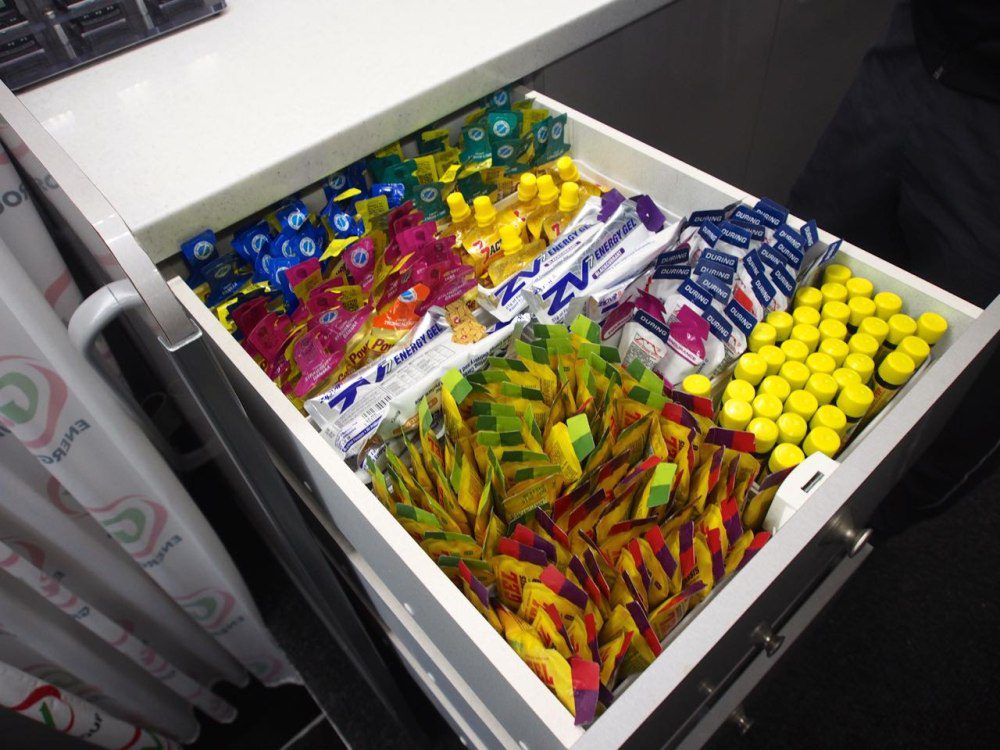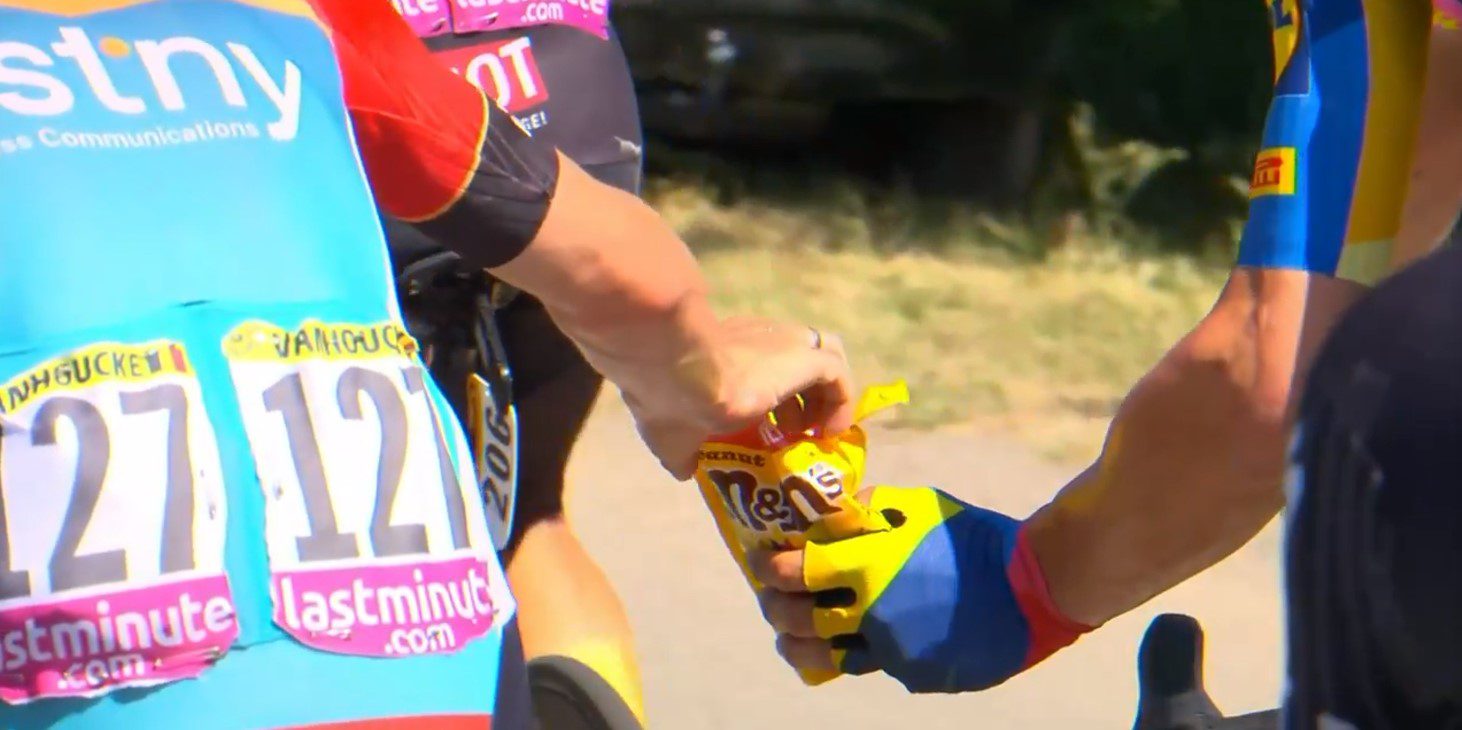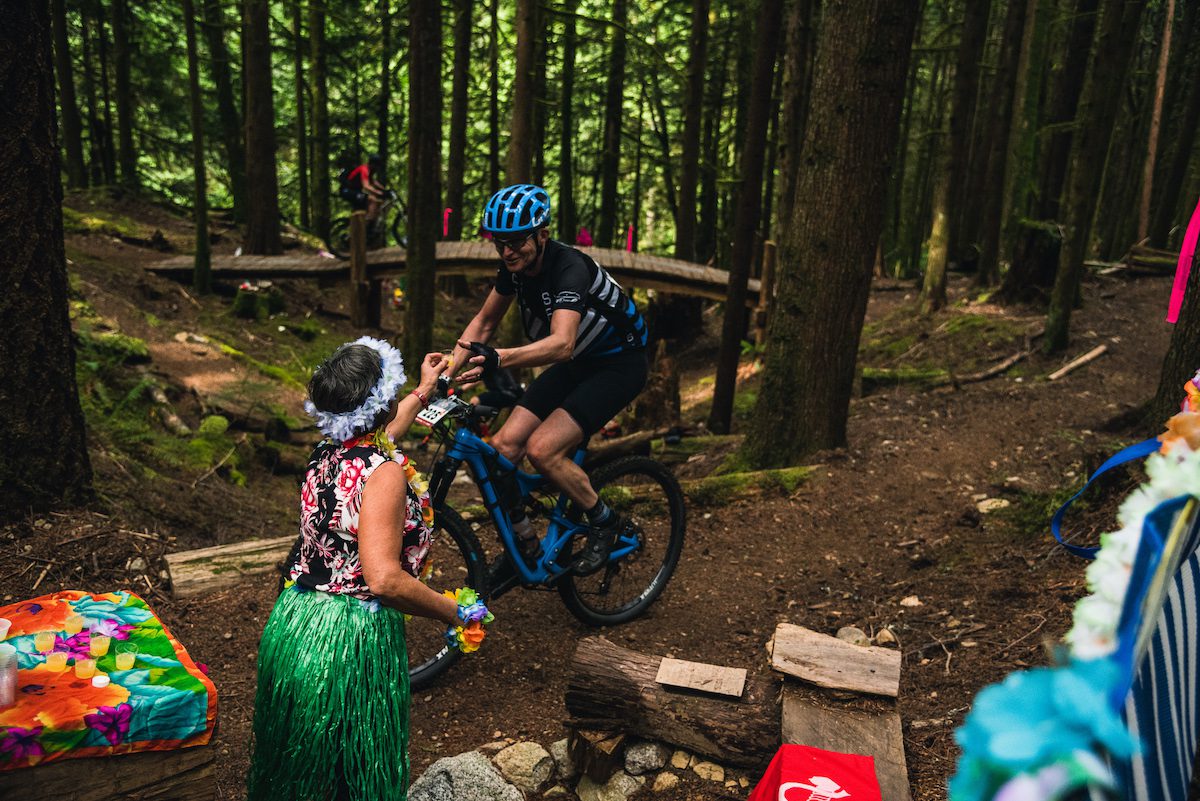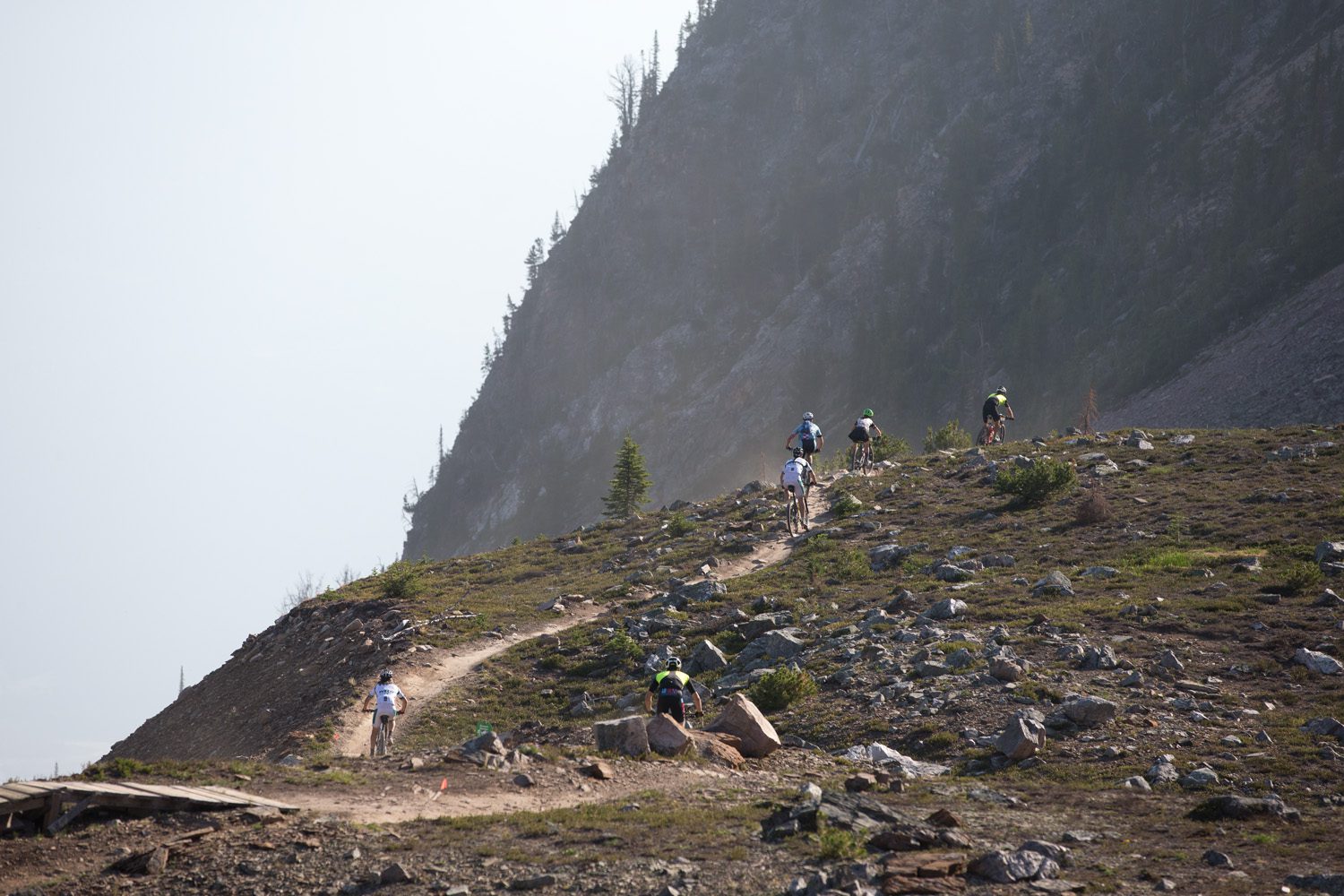When I signed up for a 100 mile race, my first ultra-distance event, I knew it was going to hurt. Of course it was going to hurt. There’s no way to get through that kind of distance without some significant discomfort. But I didn’t know it would hurt like this.
Here’s how I was blindsided by a belligerent belly, and what you can learn from my mistakes to, hopefully, avoid suffering the same fate on your next big ride.
 Aside from cakes and sandwiches, there is also a drawer full of energy gels for the riders to choose from.
Aside from cakes and sandwiches, there is also a drawer full of energy gels for the riders to choose from.
All aboard the pain train
I expected the searing legs. The shortness of breath. The general, full-body fatigue. And I would not be disappointed. That pain train was rumbling along the tracks, slowly building momentum. I could feel that presence, and I was prepared to deal with it. It’s a familiar pain, and one that usually arrives on schedule. Before it could, though, an unexpected challenge nearly derailed my race.
100 mile races are long. That means eating consistently is more important than in, say, a 90 minute XCO event. Eating, usually something I love to do, was nearly my downfall.
Out of gels? Heinz Ketchup packets can be your new alternative
I won’t tempt fate by claiming I have an iron stomach, but I’ve generally been able to rely on my tummy to take any weird foods I throw at it in stride. Other than a few times that KFC took out our entire family growing up (don’t ask why we went back, there’s no good answer), and some, uh, “liquid learning experiences” in college, I’ve generally been able to keep down whatever I’ve put down into my stomach without much complaint.
 Even the pros love M&Ms
Even the pros love M&Ms
A gutsy effort
As the hours wore on, and the gel packs started to fill my jersey pockets, my tummy started to grumble. The first four or so hours were fine. I’d spent that much time on the bike in training and my belly could bear that kind of calorie consumption without caving. After that, though, eating became a massive, and perilous chore.
Organizers had set out wonderful tables with a fantastic spread of snacks, gels, bars and foods. My body wanted none of it. At one point I tried to choke down a brownie, only to bight into it and find it rock-hard. The very kind person who’d baked them and brought them to the race informed me, with a beaming smile, they were 100 per cent vegan. While I have nothing against vegan foods, I couldn’t get this down my gullet. I had to ride out of sight before I could yak it back up into the bushes.
The cyclist’s guide to mid-ride gas station snacks
By the end of the race, the only thing I could keep down to keep moving was orange slices and a tiny handful of peanut M&Ms. On the final climb, my stomach was twisting into knots. Any time to tried to breathe in too deeply, which was every gasping breath at that point in the race, it would send off a wave of nausea. The silver lining, if you can call it that, was that I could barely notice the searing in my legs over the griping from my gut. The lack of oxygen from my forced shallow breathing was starting to cause cramps, though.
I rolled into the last aid station and, at the suggestion of the amazing volunteers there, downed a restorative shot of pickle juice. This calmed the legs a little and, while I still wasn’t feeling amazing, I continued on. After traveling all the way to Oregon just for this race, there was no way I wasn’t going to finish. I also had no idea how to get out of the woods if I had decided to pull out, so following the course markings seemed the easiest way to ease the suffering.
 You never know what food, among other things, you’ll find at an aid station. BCBR’s are particularly lively. Photo: Dave Silver
You never know what food, among other things, you’ll find at an aid station. BCBR’s are particularly lively. Photo: Dave Silver
A lesson learned: practice what you eat
I did eventually make it to the finish line. My reward was, ironically, a cream puff donut (the race’s namesake).
The lesson was thoroughly learned, though. Training is about more than teaching the legs and lungs how to suffer. If you’re going to do a race where nutrition is an essential part of the race strategy, you’d better practice that in training too. This applies most to endurance races where there is an excess of time for mistakes to compound and multiply. But the same is true of fueling for shorter efforts.
Over the course of 10 hours in Oregon, I stomached 17 bottles, a mix of sports drinks and straight water, plus one glass of coke. Nine-ish gels were mixed in, and three packs of energy chews. There were also a couple of egg-based sport bars (the specific brand is long forgotten), a bunch of orange slices, the heroic Peanut M&M’s, another brand of energy bar, the infamous chunk of vegan brownie. And one shot of pickle juice.
Recipe: Homemade electrolyte gummies
I’d tried most of this food in training before, which is part of why I was so blindsided by my belligerent belly. But I’d never tried any of those in such volume.
So if you’re planning a big race, ride or effort of your own, make sure you practice your diet as much as you practice your riding. Especially if you’re aiming for one of those trendy high-carb diets. Don’t let food be your undoing.
The other lesson from that day was that the riding in Oakridge is absolutely incredible. If you’re in Oregon, definitely take the time to check it out. The 100 mile Cascade Cream Puff is currently on hiatus, so your stomach is safe from that suffering. But the trails are phenomenal at any speed. There’s even shuttles to get you up to the best parts more quickly.

